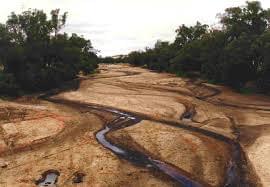Sean McLaughlin, Research Director, Environmental Fate and Metabolism, North America, describes the criteria and steps involved in soil selection for Soil Transformation studies.
Soil Transformation studies have been a mandatory requirement for pesticide registration for decades in the USA, Europe, Japan, and other OECD member countries like Brazil. The OECD Test Guideline 307 and EPA Test Guideline OCSPP 835.4100/4200 provide standard guidance to study the transformation of pesticides and toxic substances in both aerobic and anaerobic soil.
Even with this standard guidance on how to conduct studies, most of these guidelines include requirements that leave room for interpretation. For soil transformation studies, that requirement is soil selection and the determination of what soil(s) to use.
.jpg?width=599&height=800)
Both OECD 307 and OCSPP 835.4100/4200 guidelines state that for determining the transformation pathway, a representative soil can be used. The recommended characteristics of that soil are: a sandy loam or silty loam or loam, or loamy sand, according to FAO and USDA classification, with a pH of 5.5 to 8.0, an organic carbon content of 0.5 to 2.5%, and microbial biomass of at least 1% of total organic carbon. For determining transformation rates, at least three further soils are required which represent a range of relevant soil types, varying in organic carbon content, pH, clay content and microbial biomass.
Additionally, detailed information on the history of the field sites from where the test soils were collected should be available, including the exact location, vegetation cover, treatments with chemicals, treatments with organic and inorganic fertilizers, additions of biological materials or other contaminants. If the soils have been treated with the test substance or its structural analogs within the previous four years, these should not be used.
All of these characteristics are inherent to the individual soil(s) selected for testing and may have an impact on the route and rate of transformation of the test substance; where the transformation route is established in one soil and three additional soils are used for determining the rate of transformation.
So, what soils should you choose? How do you stay within the guideline requirement, while keeping in mind the typical soils found at the intended or targeted use location(s)?
First, if the intended use location is known, it is worth checking to see if soil from that area can be collected and characterized, and if the pesticide history can be evaluated to see if it fits the criteria listed in the guideline. If it does, that is a great head start.
If the soil meets the characterization requirement, but has a history of pesticide use, a similar soil type may be sourced from a site that is known to be pesticide-free. However, if it doesn’t meet the characterization requirements, but does meet the pesticide history requirement, it may still be able to be used as one of the three soils to determine rate of transformation. If one of the four chosen soils meets the requirement for studying the route of transformation to determine the pathway, you can still use soils of your choice and be assured of a regulatory acceptable study.
If the intended use site is unknown at the time of testing, soils from providers can be purchased and characterized to meet guideline requirements.
Smithers has a long history of conducting soil transformation studies and can help you obtain soils and conduct studies that meet the soil transformation OECD 307 and EPA equivalent OCSPP 835.4100/4200 study guidelines.
At our Wareham, MA laboratory we maintain an active permit with the USDA to acquire foreign and domestically restricted soils. Our Harrogate, UK laboratory has an equivalent permit allowing diverse soil selection from across the globe for use in soil transformation studies conducted at both sites.
Our Harrogate laboratory offers
GLP Soil, Sediment, and Water Characterization, with access to over 40 sites across the UK and Europe to cover a comprehensive range of characteristics and OECD guidelines.
Get in touch with us for assistance in selecting soils for your next study.
Author:
.jpg) Sean McLaughlin
Sean McLaughlin
Research Director, Environmental Fate and Metabolism
Wareham, MA, USA
.jpg?ext=.jpg)
.jpg?width=599&height=800)
.jpg)

